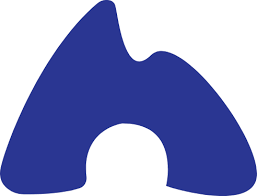Driving 20x Growth through AI Innovation in EdTech
- Context: Accave was struggling with engagement and low organic growth. I led the development of a new AI-powered study companion tailored for Nigerian students preparing for the JAMB exams.
- Problem: Students lacked accessible, real-time help. Engagement was dropping.
- My Role: As the Product Manager, I led the MVP launch for Accave’s flagship product, including the build and rollout of its most innovative feature — Jamb Buddy, an AI-powered virtual tutor. I also defined the product vision, scoped MVP, collaborated with engineers and content experts, ran UAT, and led the rollout.
What I Shipped:
- Defined the product roadmap and prioritized features for MVP (Jamb Buddy, referral engine, onboarding).
- Wrote PRDs and worked closely with engineers and designers to ship in fast cycles.
- Integrated user feedback pre-launch to validate features and improve usability.
- Developed a viral referral system to fuel user acquisition.
- Managed the virtual product launch, aligning cross-functional teams and creating demo materials.
Results: Downloads increased from 500 to 10,000, resulting in a 30% increase in retention and an improved Net Promoter Score (NPS).
- Outcome: Accave’s MVP launch validated product-market fit, attracted thousands of users within weeks, and laid a strong foundation for platform growth. The Jamb Buddy assistant received overwhelmingly positive user feedback and continues to be a strategic differentiator.
- Reflection:
What Worked
- One of the biggest wins was the clarity of the MVP vision. We resisted the urge to overbuild and instead focused on solving a very specific, validated user need: helping Nigerian students prepare for JAMB exams more effectively. That led us to build Jamb Buddy, our AI-powered tutor, which became the standout feature of the launch.
- Another effective factor was the referral system. It was lightweight, well-timed, and built into the user journey. Over 25% of new users came through referrals, a significant growth lever for the product.
- Our virtual product launch also increased visibility, which helped establish public credibility and sparked interest among both students and parents.
What I’d Do Differently
- Looking back, I would have invested more time in onboarding and activation design before launch. While our signups surged post-launch, we saw a drop-off in the first session due to unclear onboarding steps. A simple walkthrough or progressive disclosure could have improved early retention.
- I also would’ve put more structure around post-launch feedback loops. While we did collect insights, a more formalized system for analyzing, categorizing, and prioritizing feedback would’ve helped us iterate faster and smarter.
What This Taught Me About Product-Market Fit
- The response to Jamb Buddy told us we were solving a real, urgent problem. The user feedback came in quickly and frequently — students wanted more content, personalization, and accessibility. That kind of pull from the market is a strong signal of product-market fit.
- It also reinforced the power of local context in product design. By aligning our value proposition with the national exam cycle and tailoring features to the realities of Nigerian students, we built something that felt relevant. That relevance is a core driver of product adoption and retention, especially in emerging markets.
What Growth Levers Emerged
- Referral mechanics: Simple, embedded in the experience, and reward-driven.
Hyper-specific use case: We didn’t try to be a general learning platform — we focused on one core pain point, and that made the messaging and value very clear.
